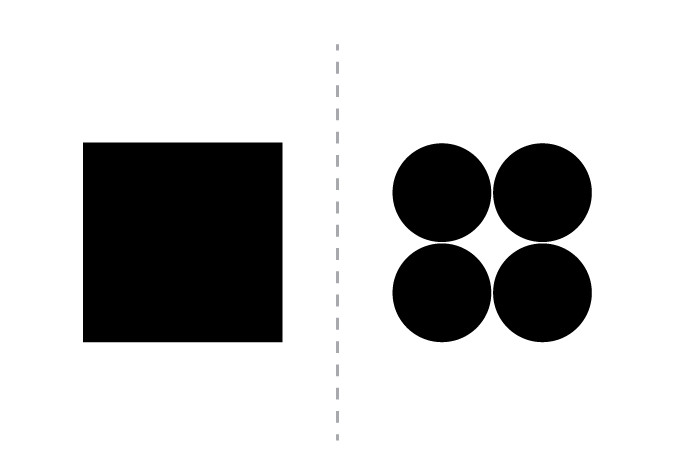Mastering the Craft: 12 Essential Principles of Graphic Design
Graphic design is a creative discipline that combines art and technology to communicate ideas visually. Whether it's designing a logo, creating a website layout, or crafting a poster, understanding the fundamental principles of graphic design is essential for creating impactful and visually appealing designs. In this article, we'll explore 12 key principles that form the foundation of graphic design and provide insights into how they can be applied to create stunning visual compositions.

Balance:
Balance refers to the distribution of visual elements within a design to create harmony and stability. There are three types of balance: symmetrical, asymmetrical, and radial. Symmetrical balance involves mirroring elements on either side of a central axis, while asymmetrical balance involves arranging elements of varying size and weight to create equilibrium. Radial balance is achieved by arranging elements around a central point.

Contrast:
Contrast involves creating visual interest by juxtaposing elements with differing characteristics, such as color, size, shape, or texture. Contrast helps guide the viewer's eye and adds emphasis to important elements within a design. By using contrasting elements effectively, designers can create dynamic and engaging compositions.

Alignment:
Alignment refers to the positioning of elements relative to each other within a design. Proper alignment helps establish visual order and cohesion, making it easier for viewers to navigate and understand the content. Aligning elements along a grid or guideline can create a sense of structure and organization, enhancing the overall readability and aesthetics of the design.

Repetition:
Repetition involves using recurring visual elements, such as shapes, colors, or patterns, to create consistency and unity within a design. Repetition helps reinforce key messages and branding elements, making the design more cohesive and memorable. By strategically repeating elements throughout a design, designers can establish visual rhythm and reinforce the overall theme or concept.

Proximity:
Proximity refers to the spatial relationship between elements within a design. Grouping related elements together through proximity helps establish hierarchy and organization, making it easier for viewers to understand the content and navigate the design. By grouping related elements closely together, designers can create visual relationships and convey meaning more effectively.

Hierarchy:
Hierarchy involves organizing visual elements within a design to convey importance and guide the viewer's attention. Establishing a clear hierarchy helps viewers understand the relative significance of different elements and navigate the content more easily. Designers can create a hierarchy through various techniques, such as scale, color, typography, and placement.

Color:
Color plays a crucial role in graphic design, evoking emotions, conveying messages, and influencing perception. Understanding color theory, including principles such as hue, saturation, value, and contrast, is essential for creating visually compelling designs. By choosing appropriate color palettes and combinations, designers can create mood, establish brand identity, and enhance visual appeal.

Typography:
Typography refers to the art and technique of arranging type to make written language legible, readable, and visually appealing. Choosing the right typefaces, fonts, and text treatments is crucial for conveying tone, personality, and message in a design. By paying attention to factors such as font size, spacing, alignment, and hierarchy, designers can create effective typographic compositions.

Space:
Space, or negative space, refers to the area around and between elements within a design. Effective use of space helps create visual balance, highlight key elements, and improve readability. By carefully considering the distribution of positive and negative space, designers can create compositions that feel open, airy, and well-proportioned.

Unity:
Unity refers to the cohesive relationship between elements within a design, creating a sense of harmony and completeness. Achieving unity involves ensuring that all elements work together cohesively to convey a single, unified message or concept. By maintaining consistency in style, color, and theme, designers can create designs that feel cohesive and visually appealing.

Emphasis:
Emphasis involves drawing attention to key elements within a design to create focal points and hierarchy. By using techniques such as contrast, color, scale, and placement, designers can make certain elements stand out and capture the viewer's attention. Emphasis helps guide the viewer's eye and convey the most important information or message within a design.

Simplicity:
Simplicity refers to the idea of keeping designs clean, clear, and uncluttered to enhance readability and comprehension. By eliminating unnecessary elements and focusing on the essentials, designers can create designs that are easy to understand and navigate. Simplicity helps reduce visual noise and allows the core message or content to shine through.

Conclusion:
Mastering the principles of graphic design is essential for creating visually compelling designs that communicate ideas effectively. By understanding and applying principles such as balance, contrast, alignment, repetition, proximity, hierarchy, color, typography, space, unity, emphasis, and simplicity, designers can create designs that resonate with audiences, convey messages clearly, and leave a lasting impression. Whether designing for print, web, or digital media, these principles serve as a roadmap for creating visually engaging and impactful graphic design compositions.







.png)






